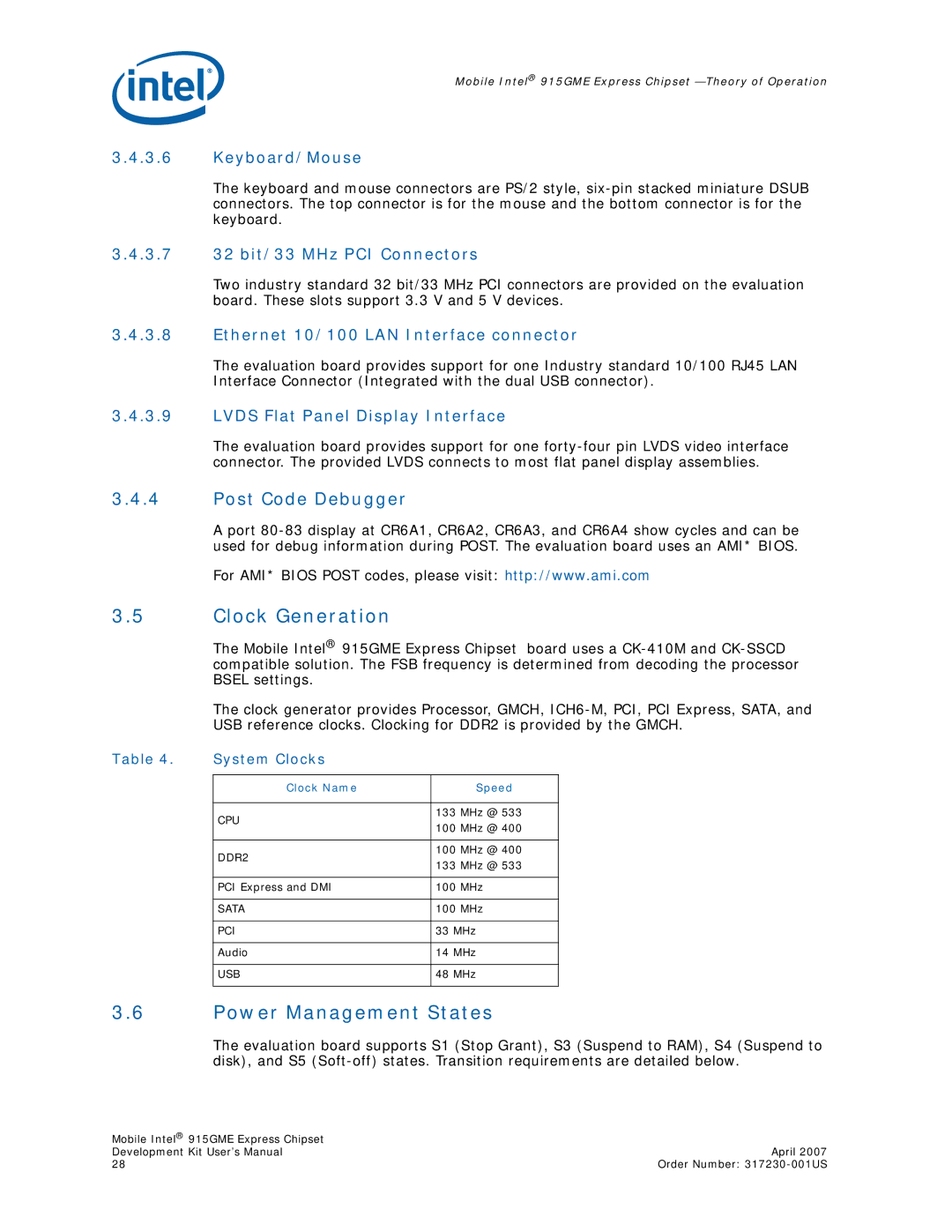
Mobile Intel® 915GME Express Chipset
3.4.3.6Keyboard/Mouse
The keyboard and mouse connectors are PS/2 style,
3.4.3.732 bit/33 MHz PCI Connectors
Two industry standard 32 bit/33 MHz PCI connectors are provided on the evaluation board. These slots support 3.3 V and 5 V devices.
3.4.3.8Ethernet 10/100 LAN Interface connector
The evaluation board provides support for one Industry standard 10/100 RJ45 LAN Interface Connector (Integrated with the dual USB connector).
3.4.3.9LVDS Flat Panel Display Interface
The evaluation board provides support for one
3.4.4Post Code Debugger
A port
For AMI* BIOS POST codes, please visit: http://www.ami.com
3.5Clock Generation
The Mobile Intel® 915GME Express Chipset board uses a
The clock generator provides Processor, GMCH,
Table 4. | System Clocks |
|
|
|
|
|
|
| Clock Name |
| Speed |
|
|
|
|
| CPU | 133 | MHz @ 533 |
| 100 | MHz @ 400 | |
|
| ||
|
|
|
|
| DDR2 | 100 | MHz @ 400 |
| 133 | MHz @ 533 | |
|
| ||
|
|
|
|
| PCI Express and DMI | 100 | MHz |
|
|
|
|
| SATA | 100 | MHz |
|
|
| |
| PCI | 33 MHz | |
|
|
| |
| Audio | 14 MHz | |
|
|
| |
| USB | 48 MHz | |
|
|
|
|
3.6Power Management States
The evaluation board supports S1 (Stop Grant), S3 (Suspend to RAM), S4 (Suspend to disk), and S5
Mobile Intel® 915GME Express Chipset |
|
Development Kit User’s Manual | April 2007 |
28 | Order Number: |
